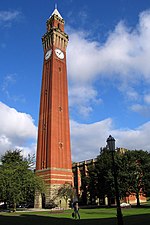King Edward's School, Birmingham

King Edward's School (KES) is an independent day school for boys in the British public school tradition, located in Edgbaston, Birmingham. Founded by King Edward VI in 1552, it is part of the Foundation of the Schools of King Edward VI in Birmingham. It is a member of the Headmasters' and Headmistresses' Conference. As of 2021, King Edward's School was ranked as one of the top 10 International Baccalaureate schools in the United Kingdom and amongst the top 25 in the world. In 2020, the Tatler School Guide described the school as “academically elite,” going on to note that it is “in the process of upping its already sky-high intellectual ante [...] with top-of-the-range sporting facilities and a raft of extracurricular activities [...] it comes as no surprise that leavers head off to a shining constellation of universities.”It shares its site and is twinned with King Edward VI High School for Girls (KEHS). Whilst the two schools are managed separately, dramatic arts, societies, music and other events are often shared; the schools also share a couple of hockey pitches and several clubs. The shared area is called Winterbourne after the nearby Winterbourne Botanic Garden. Alumni of the school include two Nobel laureates, as well as J. R. R. Tolkien, author of The Lord of the Rings, and Field Marshal William Slim, 1st Viscount Slim, British military commander in Burma during the Second World War.
Excerpt from the Wikipedia article King Edward's School, Birmingham (License: CC BY-SA 3.0, Authors, Images).King Edward's School, Birmingham
Bristol Road, Birmingham Selly Park
Geographical coordinates (GPS) Address Nearby Places Show on map
Geographical coordinates (GPS)
| Latitude | Longitude |
|---|---|
| N 52.4507 ° | E -1.9237 ° |
Address
Schools of King Edward VI in Birmingham
Bristol Road
B5 7SL Birmingham, Selly Park
England, United Kingdom
Open on Google Maps










